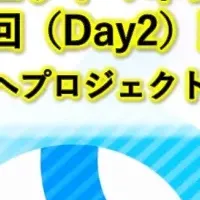
Revolutionizing Collision Repair: The Collision Engineering Career Alliance Launch
Collision Engineering Career Alliance: Shaping the Future of Collision Repair
The Collision Engineering Career Alliance (CECA) has officially launched, marking an important milestone in the evolution of collision repair education. This nonprofit organization aims to strengthen the future of collision repair by fostering a community-driven approach to education and skill development. Established as a response to the pressing need for skilled collision repair technicians, the initiative succeeds the earlier pilot program initiated by the Enterprise Mobility Foundation and Ranken Technical College back in the fall of 2020.
Addressing an Urgent Need
With a staggering projected demand of over 100,000 job openings for collision repair technicians by 2028, the creation of the Collision Engineering Career Alliance is timely. The program not only enhances accessibility to education but also emphasizes hands-on, real-world training, thus preparing students for successful careers in a high-demand field.
The program's origins can be traced to a pilot scheme launched at four schools across the United States. It demonstrated the efficacy of a hybrid apprenticeship model that pairs classroom learning with on-the-job experience. Following its success, CECA is expanding to include more schools and reaching out to industry partners for support. As Carolyn Kindle, President of the Enterprise Mobility Foundation, noted, "Nonprofit status will enable the Collision Engineering Career Alliance to remove barriers and create rewarding collision careers in more communities."
Commitment to Community and Collaboration
The Collision Engineering Career Alliance represents a collaborative effort among various stakeholders in the collision repair industry. Chrissy Taylor, CEO of Enterprise Mobility, stated, "Addressing the increasing demand for a highly skilled collision repair workforce is critical to ensuring the future of mobility—but achieving this goal will require a collective effort." The coalition will work not only to attract students to the field but also ensure they have the resources necessary to succeed, including financial support for certifications and tuition reimbursement.
A Proven Model for Success
The success of the collision engineering program can be measured by its impressive statistics: 87.5% of enrolled students have completed the program, and importantly, 100% of those graduates received job placements before graduation. The existing model, with its innovative two-year apprenticeship and industry-guided curriculum, continues to be a cornerstone of the program's effectiveness.
Currently, CECA operates in six schools nationwide: Ranken Technical College in St. Louis, Missouri; College of Lake County in Grayslake, Illinois; Contra Costa College in San Pablo, California; Parkland College in Champaign, Illinois; Metropolitan Community College in Omaha, Nebraska; and Sandhills Community College in Pinehurst, North Carolina. Plans for further expansion are on the horizon, with additional schools expected to adopt the program in 2025.
Looking Ahead
The Collision Engineering Career Alliance is more than just an educational initiative; it represents hope for the future of the collision repair industry. By promoting a skilled workforce through education and industry partnership, CECA aims to provide students with opportunities that ensure their success in a rapidly changing automotive landscape.
For those interested in learning more about the Collision Engineering Career Alliance, the official website, beacollisionengineer.org, serves as a hub for information on the program and upcoming opportunities.
In conclusion, the Collision Engineering Career Alliance is setting a new standard for workforce development in collision repair. By bridging the gap between education and industry needs, CECA is poised to redefine the future of collision repair careers across the United States.
Topics Other)










【About Using Articles】
You can freely use the title and article content by linking to the page where the article is posted.
※ Images cannot be used.
【About Links】
Links are free to use.